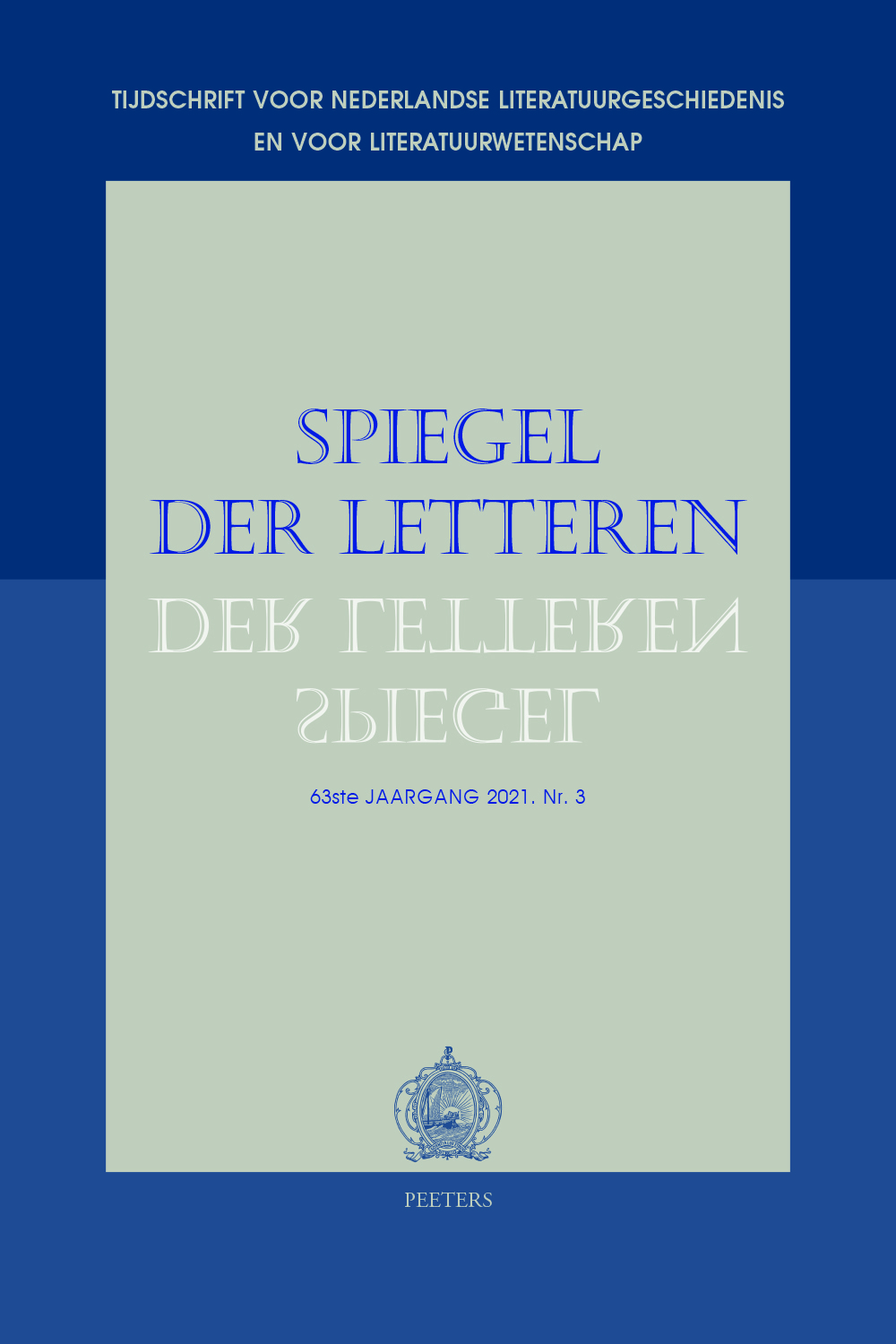 previous article in this issue previous article in this issue | next article in this issue  |

Preview first page |
Document Details : Title: De fondantlaag van de romantiek. Subtitle: Vier teksten over slavernij in Suriname Author(s): VAN KEMPEN, Michiel Journal: Spiegel der Letteren Volume: 44 Issue: 1 Date: 2002 Pages: 63-83 DOI: 10.2143/SDL.44.1.376 Abstract : How did the nineteenth-century romantic imagination respond to the Dutch colonies in the West? Can we discover any development in this kind of fiction? What made the genre flourish? These questions are discussed focusing on four prose texts: a short story by Elise van Calcar, a short novel by C.H. Schetsberg, a novella by Ant. S. Reule and a novel by J. de Liefde. Not the Romantic interest for historical exotic subjects seems to have determined the flourishing of Dutch slave narratives, but rather the moral indignation concerning the postponement of the abolition of slavery. The goal of the abolitionists was finally achieved in 1863, upon which slavery became a ‘safe’ subject for narratives: it was no longer too emotionally charged to handle. Beecher Stowe’s Uncle Tom’s Cabin certainly played an important role, but Dutch prose depicted the atrocities of slavery in greater detail than North-American fiction did. Most of the texts were structured along the same chronological pattern: Africa, the Middle Passage, life in the West Indies and the growing loyalty to the slave master, conversion to christianity. |
|


